2 Critical Horseback Riding Psychology Tips
About the Breakthroughs Need Breakdowns Author
Ben Foodman is a licensed psychotherapist & performance specialist. He owns his private practice located in Charlotte North Carolina where he specializes in working with athletes to help them overcome mental blocks (the yips), PTSD, ADD / ADHD and achieve flow states through the techniques of Brainspotting & Neurofeedback. If you are interested in services, use the link here! Enjoy the article below!
Introduction: Why Many Equestrian Athletes Don’t Understand Horse Psychology
Equestrian athletics is one of the most mentally and physically challenging sport environments an athlete can compete in. It is absolutely critical that an athlete be in top physical condition in order to meet the demands of the equestrian event that they are competing in. Many equestrian athletes also understand that it is vital to be in top mental condition to perform at a high level too. Horseback riders probably have heard instructors say things like ‘ride with confidence’ or have heard terms surrounding mental toughness or focus. But from my experience what has been absolutely shocking is how very few experts within the equestrian community understand horse psychology.
But well before an equestrian athlete can reach their potential, they need to have a solid understanding of how horses think (and if possible how horses feel). Through my work with equestrian athletes, I have found that in nearly 100% of athlete case studies, all riders need some basic introduction into the neuroscience behind both horse psychology and the connection to the human nervous system. I discuss these issues in-depth in my book Breakthroughs Need Breakdowns. For this issue of the notes, I will first introduce the concept of horseback riding psychology, then I will explore horse neuroscience, and finally I will provide sport psychology tips that I used with my athlete in my book.
Part I. Introduction To Horseback Riding Psychology
Let’s start with the obvious. Horses are prey animals that live in herds. These two facts tell us some very important things about horse psychology. The first is that horses always ‘have their heads on a swivel’. They are constantly on the lookout for potential predators or threats within their immediate environment which is how they have adapted to survive over the millions of years that they have inhabited the planet. Obviously, this behavior is representative of the psychology of a prey animal. Second, horses are incredibly curious and social creatures. They form intimate bonds with those in the herd AND are always trying to assess who is the alpha. Equestrian athletes can do one of two things with this information: they can either leverage this to their advantage or they can ignore it at their own peril and not develop any form of meaningful communication with their teammate. Interestingly in my experience, many equestrian athletes are mostly unaware of these psychological characteristics and underestimate the impact these behaviors will have on the performance (which is why in most cases, they end up working with me). When equestrian athletes seek the services of a sport psychologist, it’s because they mistake these experiences as a mental block. But what I have found is that on average is that it isn’t a mental block, but rather the rider is missing the necessary language to communicate with their teammate.
To be blunt, the fact that horses are gracious enough to let a predator ride its’ back, should be enough to motivate humans that want to work with these animals to increase their ability to communicate with them more efficiently. Consider the following scenario: your boss tells you that you are going to need to start learn a new skill (e.g. playing an instrument, learning about car engines, etc.). Maybe you are excited by this, but maybe you aren’t. For the moment, let’s assume that you are not thrilled with this new task you’ve been given. What is your motivation at this point? Next, your boss says that you have to learn this skill from an instructor who speaks a completely foreign language to you…what is your mood and motivation now? Consider the world that horses inhabit when it comes to the equestrian relationship. This type of scenario is probably fairly representative of a horse’s experience with most humans, and to make matters worse, humans oftentimes become frustrated with horses at the worst moments of this rollercoaster ride of emotions. This is in large part because many humans do not understand the power of the fight, flight, freeze systems that become activated by these events. Equestrian athletes don’t need to be experts in horse neuroscience, but it certainly would help if they retained basic information about how the hardware and software in a horse’s brain works in these scenarios. Let’s explore in more detail what this looks like.
Part II. Research & Analysis Of Horse Neuroscience
Let’s begin by understanding specific areas of the horse’s brain that will help us better understand these fascinating creatures. In the article Prefrontal Cortex in Horses and Humans by Janet L. Jones Ph.D., the author provides us valuable insight into similarities and differences between a horse’s brain and our own. The author states the following: Many horse owners think the existence of the prefrontal cortex is a major controversy in equine science. It’s not. It’s just an area that’s riddled with misinformation. Curiously, most people—horsey or not—want the prefrontal cortex to be part of the horse’s brain. How does their reasoning go? “If I have one and I’m smart, he must have one because he’s smart.” That’s an oversimplified generalization, but at base, I think it’s true. The prefrontal cortex is a small portion of brain tissue located at the front of the frontal lobe in human brains, just behind and above our eyes. It’s responsible for what we call the executive function—planning, organizing, deciding, evaluating, and strategizing. It’s also responsible for judging, worrying, and manipulating. Humans rely strongly on the prefrontal cortex. Horses do not. Thirty-three percent of the average human cortex—the outer layers of the human brain—is prefrontal. That’s a lot! It matches our sense that we spend a lot of time carrying out the activities of executive function. By comparison, about 15 percent of the monkey cortex is prefrontal, and only 5 percent of the cat and dog cortex is prefrontal. These canine and feline predator brains are capable of limited executive function and spend very little time carrying out executive tasks. But they probably can when they need to. Prey brains are different in many important ways from predators' brains. Horses have no prefrontal cortex. They do not even have a frontal lobe. The accuracy of these facts is verified easily by consulting recent MRI images of the equine brain. So if horses have no prefrontal cortex, how do they solve problems?
The author continues: They use their excellent memories and senses. What worked in the past? What action led to positive consequences? Try that! The last thing a prey animal needs to survive is a prefrontal cortex. All that time spent pondering, deciding, and planning is time taken away from fleeing danger. Over 56 million years of evolution, the equine brain has evolved to prevent wasting time. A horse who considers the meaning of a movement in the grasses is a horse who becomes a predator’s dinner. The lack of the prefrontal cortex in horses is a gift to them and us. It keeps them alive and helps to sharpen their memories. But it allows us to work with animals who live in the moment, who do not—indeed, can not—judge, criticize, worry, or manipulate. What a refreshing experience! So, now that we understand some of the evolutionary reasons that drive horse behavior, let’s continue to dive deeper into the specific hardware that affects these fight, flight responses: The amygdala. In the article Nociceptive pain and anxiety in equines: Physiological and behavioral alterations by the authors state the following when describing this structure: The amygdala forms part of the limbic system. It is located in the medial temporal lobe, which is known for its role in the emotional states of sensory stimuli, related to behavioral adaptations in response to changes in an organism’s internal and external environment. Current lines of research, both anatomical and physiological, suggest that nociceptive projections that originate in the lamina I of the dorsal horn of the spinal cord, or the spinal nucleus of the trigeminal nerve, leading to the parabrachial nucleus and then to the central nucleus of the cerebral amygdala, which functions as the main exit for projections from the amygdala, performs functions related to pain, and participates significantly in the emotional-nociceptive component by modulating part of the behavioral component, including, to a large degree, facial expressions generated by pain.
The authors continue: Schmidt et al. evaluated the morphology of the warm blood horse through magnetic – resonance - imaging; they found functional connections located mainly in the limbic system between cortex somatosensory and amygdala, areas that have been proven to be responsible for threat detection. The CNS has neuronal groups called central pattern generators (CPG), located in the mesencephala, bridge, and spinal cord, in both humans and animals. These groups form part of the neuronal circuits that organisms possess to modulate their adaptation to the demands of the environment, and allow individuals to express motor responses that include recognition of emotions. CPG are activated principally by stimulation of the peripheral sensory receptors and signals generated by other nuclei of the CNS. As a result, the limbic system regulates the expression of emotional responses, while the CPG associated with this system initiate and controls the activity of the facial muscles to generate a conservative, stereotypical response to a specific stimulus. During the sensations of fear and terror, the peripheral stimuli will lead to the activation of the limbic system that will produce physiological responses such as increased heart rate and respiratory rate, dry mouth, muscular tension, and sweating. In the same way, there is an emotional reaction that communicates the internal state of an individual that can be reflected through gestures or facial expressions. Previously, it was mentioned that emotions were uniquely human characteristics; however, Charles Darwin described them as emotional states such as fear, aggression, and pain in animals expressed by postural reactions and facial expressions. Understanding an emotion such as fear requires, first, knowing the relationship between the cognitive sentiment represented in the cerebral cortex and the associated physiological signs regulated by subcortical areas.
The authors conclude: This process occurs in the following order. First, an emotional stimulus of significant intensity activates sensory systems that send information to the hypothalamus. This area generates a response that is capable of modulating heart rate, blood pressure, and respiratory rate. At the same time, the information from this stimulus is carried to the cerebral cortex; hence, it is taken indirectly from the peripheral organs (which lose their homeostatic state due to the stimulus) and directly from the hypothalamus, amygdala, and related structures. Hence, from a neurobiological point of view, anxiety, and pain share the communication pathways in the limbic system that makes it difficult to establish a difference for their recognition since they will lead to similar physiological reactions. Therefore, the limbic system fulfills the role of interconnection, processing, and response, both physiological and emotional, which will be reflected with the activation of the sympathetic nervous system or postural reactions that communicate the internal state of the individual. While there are undoubtedly key differences in the fight, flight responses between humans and horses, there are many striking similarities as well. Why is this important? There is a term in the study of consciousness called Qualia which has been defined as ‘the internal and subjective component of sense perceptions, arising from stimulation of the senses by phenomena’. There is the subjective experience of fear and pain, but we also have a shared experience of this as well. Because we as humans know what it is like in some form or fashion to suffer under the mental conditions of fight-flight, then we should try to work with these animals with empathy and leverage their strengths rather than weaponize these instincts against them (e.g. breaking in horses, viewing them exclusively as property, short-tempers when they don’t obey us). So how exactly can we engage with these animals in a more positive light to yield better performances and relationships?
Part III. Sport Psychology Tips To Enhance Horseback Riding Connection
Now that we have introduced important concepts in animal and horse psychology that are critical for equestrian athletes to know in order to form a strong connection with their teammate, we need to explore the truth behind the concepts of fake confidence, trauma and how these issues prevent riders from truly bonding with their animal comrades. Let’s first begin by exploring what equestrian athletes are commonly taught about confidence versus the reality. Horseback riders are often taught that they need to ‘ride with confidence’ but in my experience they are rarely told what this means or even how to do this. Based on my experience working with elite athletes, confidence is not a place that you arrive or stay at, but rather a place that you temporarily visit and then promptly exit. Furthermore, there are too many variations of unexpected stress markers that can happen during sport events. To imply that confident athletes remain confident in all situations all the time goes against everything we understand about neuroplasticity and how the brain truly functions. Instead, equestrian athletes should focus on these two concepts to achieve peak mental performance: be cognitively flexible rather than confident, and become comfortable with discomfort. Let me explain more on this. On any given day, your horse may be feeling motivated to work with you or not motivated to work with you. But regardless of where they are on this spectrum, equestrian athletes need to adapt to where their horses are in terms of mood, temperament and motivation. Consider the following scenario: you are an elite equestrian athlete preparing for one of your biggest competitions of the year. However, the night before you contract the flu and wake up feeling mentally and physically debilitated. You know that you have to go through with the performance, but you know you will not be able to put on your best work. What do you do?
Traditional sport psychologists would cite ‘mental toughness’ strategies and encourage you to ‘gut it out’. Based on my applied experience working with Olympic-level and elite equestrian athletes, it is better to adapt to your situation rather than perform outside of your capabilities. What does this look like? On a scale of 1-10 (10 being you feel great, 1 you feel terrible) let’s assume that you are a 1 and you are obligated (and still somewhat capable) to perform. As a 10 athlete, you are able to do more advanced maneuvers than a 1. But because you are a 1, making those maneuvers is not an option. But, you are still capable of doing certain things, even if they seem small or meaningless. If you can focus on doing what you are capable of on that day rather than what you are not capable of, you are still in the competition. Furthermore, there is no assurance one way or another that your competition is a 10 out of 10, when in fact they may be a 1 as well. However, it is also critical to make sure you identify what your horse’s capabilities are and ensure that you only ask of them what you know they will give you. But there is one more mental training technique that can help enhance your ability to communicate with your horse. The new technique that has athletes talking is called Brainspotting. Brainspotting is a brain-based mental training intervention that utilizes the athlete’s field of vision combined with focused mindfulness to help athlete’s overcome mental blocks while also becoming ‘comfortable with discomfort’. Trauma expert Robert Scaer described Brainspotting as follows: Brainspotting is based on the profound attunement of the therapist with the patient, finding a somatic cue and extinguishing it by down-regulating the amygdala. It isn’t just PNS (Parasympathetic Nervous System) activation that is facilitated, it is homeostasis”
In the research article Brainspotting: Sustained attention, spinothalamic tracts, thalamocortical processing, and the healing of adaptive orientation truncated by traumatic experience, the authors explain the science behind how Brainspotting works: Full orientation to the aversive memory of a traumatic experience fails to occur when a high level of physiological arousal that is threatening to become overwhelming promotes a neurochemical de-escalation of the activation: there is then no resolution. In Brainspotting, and other trauma psychotherapies, healing can occur when full orientation to the memory is made possible by the superior colliculi-pulvinar, superior colliculi-mediodorsal nucleus, and superior colliculi-intralaminar nuclei pathways being bound together electrophysiologically for coherent thalamocortical processing. The brain’s response to the memory is ‘‘reset’’ so that the emotional response experienced in the body, and conveyed through the paleospinothalamic tract to the midbrain and thalamus and on to the basal ganglia and cortex, is no longer disturbing. Completion of the orientation ‘‘reset’’ ensures that the memory is econsolidated without distress and recollection of the event subsequently is no longer dysphorically activating at a physiological level. When athletes experience unwanted feelings during competition such as anxiety, traditional sport psychologists will give them tools to distract them from these feelings. But Brainspotting helps athletes train their minds to allow the discomfort to exist, which in turn helps extinguish the negative symptoms outright. One reason Brainspotting is so effective specifically with equestrian athletes is because Brainspotting forces athletes to become more aware of negative somatic sensations that are occurring in their bodies, and if they can be more alert to these sensations, they will be able to communicate more effectively with their teammate! If you are interested to learn more about Brainspotting, use this link here!






























